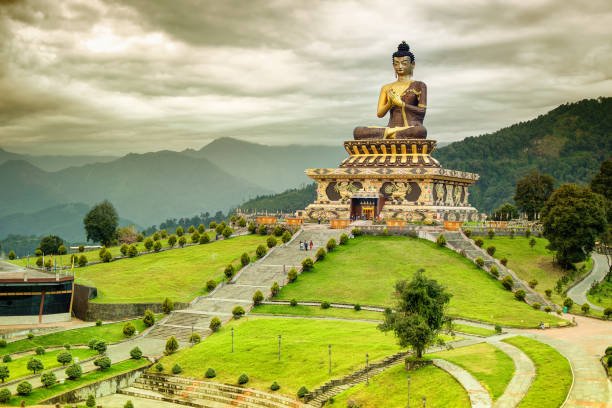The Fascinating History of Sikkim: A Journey Through Time and Heritage
Sikkim is a small state in the northeast region of India, surrounded by Bhutan, Tibet, and Nepal.

Sikkim is a small state in the northeast region of India, surrounded by Bhutan, Tibet, and Nepal. With its stunning landscapes, diverse culture, and fascinating history, Sikkim is a must-visit destination for every traveler. In this blog, we will take you on a journey through time and heritage to explore the fascinating history of Sikkim.
Introduction
Sikkim has a rich and diverse history that dates back to the 17th century. It was once an independent kingdom and later became a protectorate of India. The state has witnessed the rule of different dynasties, including the Chogyals and the British. Sikkim's history is marked by the influence of different cultures, religions, and traditions, making it a unique and fascinating destination to explore.
The Early Days of Sikkim
Sikkim was once ruled by the Lepchas, the indigenous people of the region. In the 17th century, the kingdom of Sikkim was founded by Phuntsog Namgyal, who became the first Chogyal or king of Sikkim. The Chogyals ruled Sikkim for over 300 years until it became a part of India in 1975.
The Chogyals and Their Legacy
The Chogyals of Sikkim were great patrons of Buddhism and promoted the religion throughout the kingdom. They built numerous monasteries and religious institutions, which are still standing today. The most famous monastery in Sikkim is the Rumtek Monastery, which was built in the 16th century and is home to some of the rarest Buddhist artifacts and manuscripts.
The British Influence
The British came to Sikkim in the 19th century and established trade relations with the kingdom. They also helped Sikkim in resolving its border disputes with Tibet and Bhutan. During British rule, Sikkim witnessed the construction of roads and other infrastructure projects, which helped in the state's overall development.
Sikkim After Independence
After India's independence, Sikkim became a protectorate of India in 1950. In 1975, Sikkim was merged with India and became its 22nd state. Today, Sikkim is a thriving state with a diverse population and a rich cultural heritage. The state has become a popular tourist destination, with Sikkim tour packages attracting visitors from all over the world.
Sikkim has a lot to offer to its visitors, from stunning landscapes to unique cultural experiences. Some of the must-visit places in Sikkim are:
- Gangtok - the capital city of Sikkim, known for its beautiful landscapes and vibrant culture.
- Pelling - a charming town famous for its monasteries and stunning views of the Himalayas.
- Tsomgo Lake - a sacred lake located at an altitude of 12,400 feet, surrounded by snow-capped mountains.
- Nathula Pass - a mountain pass on the Indo-China border, known for its breathtaking views and strategic importance.
Conclusion
Sikkim is a fascinating destination with a rich history and diverse culture. It is a must-visit destination for every traveler, offering a unique blend of natural beauty, cultural experiences, and historical significance. So, if you're planning a trip to Sikkim, make sure to explore the state's rich history and heritage, and visit the must-see places mentioned above. With Sikkim tour packages, you can experience the best of this beautiful state and create memories that will last a lifetime.
What's Your Reaction?





















